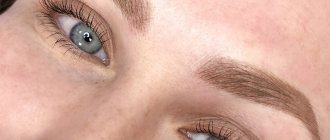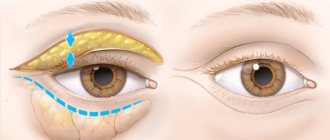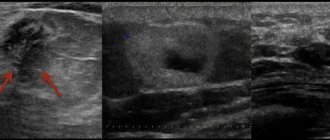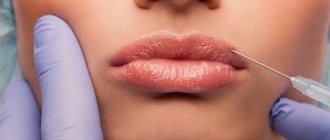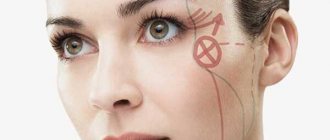Price
| Surgeon consultation | RUB 1,000.00 |
| Consultation with a cosmetologist + ultrasound | RUB 3,000.00 |
| Magnetic laser therapy | RUB 900.00 |
| Microcurrent therapy | RUB 1,800.00 |
| Revixan | RUB 4,500.00 |
| Removal of hyaluronic acid fillers using enzymes (Longidase) | RUB 4,500.00 |
| Plasma therapy | RUB 5,400.00 |
| Needle RF |
Botulinum toxin injections are an effective anti-aging procedure that has been highly popular for many years.
Botulinum therapy helps fight age-related changes. It is used to correct problems in the bridge of the nose, forehead, chin and area around the eyes. Botox effectively smooths out wrinkles, lifts the corners of the mouth, relieves tension in the bridge of the nose and relaxes the chewing muscles.
Meanwhile, patients often encounter side effects. And the complications of botulinum therapy that arise can significantly worsen the patient’s appearance and negate all the positive results of the procedure.
Negative consequences of injections can arise due to the unprofessionalism of the specialist who performed the procedure, or the patient ignoring the specialist’s recommendations after the procedure.
What to do immediately after the procedure
Firstly, you will have to maintain an upright position for at least two hours. This is necessary to ensure that the muscles and tissues of the face are in a natural state while the absorption processes of the administered drug take place. Lying down, leaning forward, etc. there is a risk of giving the face an unnatural mask expression.
It is also recommended to force the facial muscles to work. It is allowed to grimace, talk a lot, laugh, frown, etc. The fact is that moving muscles ensure deeper penetration of Botox into the tissue. You can't touch your face. Do not forget that “making faces” is only useful for 1/2 hour after the procedure. Then comes the stage of muscle atrophy, so it is advisable to minimize facial activity in order to avoid injury.
Complications after injections
Among the most common complications caused by botulinum therapy are:
- ptosis of the upper eyelid;
- the appearance of facial asymmetry;
- drooping, heaviness in the bridge of the nose
- drooping eyebrow;
- swelling.
- visual impairment "diplopia"
Other specific changes that require correction may also occur (“floppy neck syndrome”, impaired lacrimation, blurred vision, weakness when chewing, drooling, etc.).
Let's look at the common negative effects of Botox or Dysport in more detail.
Ptosis of the eyelid
This complication is accompanied by immobilization of the muscles that are responsible for raising the eyelid. The pathology manifests itself in the form of a drooping upper eyelid and a half-closed eye. So, when a complication occurs, patients notice that after Botox their eyelids droop and a number of other unpleasant effects occur. Depending on the degree of complication, this may be a slightly “overhanging” eyelid, or an almost completely closed eye. The side effect may also be accompanied by a number of associated inconveniences and problems - a “sleepy” expression on the face, a tilted head, the need to make additional efforts to completely close the eye.
As a rule, after unsuccessful Botox injections, unilateral eyelid ptosis occurs. However, the doctors at our clinic also encountered a situation where the eyelids drooped in both eyes.
Most often, eyelid ptosis appears due to a violation of the botulinum therapy technique and an incorrectly calculated dose of the drug. However, complications can also arise if the patient does not comply with the cosmetologist’s recommendations. In particular, immediately after the procedure it is not recommended to visit the bathhouse, solarium or actively engage in sports.
After the Botox procedure, complications in the form of drooping eyelids usually do not appear immediately, but only after 5-7 days. If a side effect is detected, we recommend that you immediately contact specialists who have experience in dealing with complications after injection cosmetic procedures.
Asymmetry
Violation of facial symmetry after botulinum therapy can manifest itself in the form of asymmetry of the smile, cheekbones, mouth during facial expressions, complications such as “crow’s feet”, etc. The main reason is a violation of the injection technique.
Asymmetry, like other complications from Botox injections, can be corrected. The main thing is to turn to professionals with relevant experience.
Swelling after Botox
The rejuvenating effect of botulinum therapy is achieved due to the fact that botulinum toxin partially immobilizes facial muscles. In this case, important physiological processes are sometimes affected, which can lead, for example, to stagnation of lymph or venous blood. And this, in turn, can provoke swelling of the face or individual affected areas.
In general, slight swelling after injection procedures is normal. Natural swelling most often goes away quickly and does not cause concern. But in some cases, swelling may occur that does not go away for a long time, requiring correction.
Swelling after Botox can be associated with the characteristics of the body or mistakes of the cosmetologist. So, swelling can occur for the following reasons:
- incorrect dosage of the drug;
- use of an uncertified drug;
- specialist error when choosing the point of drug administration;
- allergic reaction;
- tendency to swelling;
- weakened immune system;
- decreased muscle tone;
- kidney, liver or cardiovascular diseases and autoimmune diseases.
In any case, if swelling of the eyes or other affected areas does not go away a few days after the procedure, you should contact a specialist.
The first 15 – 20 days after Botox or Dysport
Swelling may occur at injection sites. This is normal for the first weeks. Swelling is especially noticeable under the eyes, where the skin is most delicate. If you monitor your fluid intake, swelling will be minimal. Those who have everything in order with their metabolism do not need to make changes to their usual diet. Only certain metabolic disorders in the body can affect the anti-aging result. Then you will need a diet. This point needs to be clarified during a consultation with a cosmetologist.
Naturally, skin that has experienced severe stress requires special care in the first weeks. Peeling procedures cannot be done, nor can scrubs be used. This can not only increase the post-traumatic effect, but also lead to infection. It is recommended to limit yourself to masks that relieve swelling and use soothing cosmetics.
Botox/Dysport may not give such a good result if you visit baths, saunas, etc. Intense heat activates the processes of removing the drug from tissues at the stage of its fixation. It is also recommended to solve all problems with the oral cavity and teeth before injecting the drug. Partially atrophied muscles simply will not allow you to open your mouth normally during the first 2/3 weeks.
Help with complications after botulinum therapy
Any complications that arise after injections require a professional, competent approach. Therefore, if you experience side effects, for example, a drooping forehead, facial asymmetry, or swelling of the eyes after Botox, contact experienced specialists.
Our clinic has a special department for dealing with complications from cosmetic procedures. Reception is carried out by qualified doctors with many years of experience in their field of specialization.
Our clinic’s specialists will diagnose and help correct almost any side effects of botulinum therapy - remove swelling and bumps after Botox, eliminate ptosis, asymmetry or other complications after cosmetic procedures.
Botox and solarium
In this matter, the recommendations are similar to the previous ones: you should refrain from visiting the solarium. As you understand, the answer to the question “is it possible to sunbathe after Botox” is also obvious. Sunbathing and active ultraviolet radiation have a pronounced warming effect, and heating the injection sites is very undesirable. A specialist must warn you about all this. So do not plan trips to hot countries immediately after a session of beauty injections and do not think about lying on sultry beaches after Botox. But after a certain time, you will perfectly pamper yourself and those around you with a fresh bronze tan and elastic skin.
Duration of swelling
Are your lips swollen after lip augmentation, and would you like to know how long this effect will last? It all depends on the drug used by the cosmetologist, its volume, the number of injections and the individual characteristics of the body. Fillers containing low molecular weight hyaluronic acid cause minimal side effects and complications; more concentrated gels often provoke severe swelling. Normally, swelling lasts no more than 14 days and goes away without outside intervention. If the reaction is strong, the condition bothers you, or lasts longer than expected, seek help from a cosmetologist. The key to successful results of the procedure is the correct choice of specialist and the use of high-quality drugs.
Swelling – is it possible to avoid its occurrence, how to quickly remove it?
Are your lips very swollen after lip augmentation? If there is severe swelling and other concerns, make an appointment with a cosmetologist who will conduct an examination and tell you if there is cause for concern, give recommendations on how to eliminate side effects, and decide on the advisability of using pharmaceutical drugs with anti-inflammatory, drainage effects.
It is impossible to completely avoid the formation of swelling during lip augmentation, but if you use fillers with low molecular weight hyaluronic acid and inject them correctly, swelling will be minimal. And one more thing - the fewer punctures you make during the introduction of the gel, the less the tissue will subsequently swell. But the number of injections is determined by the doctor; you should not ask the doctor to do fewer injections - an experienced doctor will do exactly as many as necessary.
Plump, sexy lips are a pleasure that is available to everyone thanks to hyaluronic acid injections. The volume of the drug is selected individually, taking into account the anatomy of the face and the desired effect. Do the procedure in a good clinic, with competent doctors, take precautions - and the swelling will go away quickly, and the result will please you for a long time.
Where does swelling come from?
It is simple to explain the appearance of swelling with lip augmentation - this is a reaction to tissue injury and the introduction of filler; any drug, even the “lightest” one and administered in small quantities, causes a response from the body. The ultra-thin needles and minimal dosages of filler do not guarantee the absence of tissue swelling. Since hyaluronic acid is a hydrophilic substance, it attracts liquid, and this is completely normal (otherwise the skin would not acquire such a youthful, toned appearance thanks to it, and the lips would not become plump and “juicy”).
There is always swelling after injections. Even if it seems to the patient that it is not there, the physiology of the process of injection lip augmentation is such that swelling is present to one degree or another, although it may be comfortable and indistinguishable from the further effect of lip augmentation, when the swelling reaction goes away and the filler “stands up”, creating required volume. Usually the swelling goes away on its own within 3-14 days, sometimes it can persist longer. If swelling lasts longer, contact the doctor who performed the procedure. An examination after lip augmentation is usually scheduled two weeks after the procedure.
Botox injections: how it all happens
Botulinum therapy is performed not only in clinics, but also in ordinary beauty salons. However, the main thing here is a highly qualified doctor with a medical education and the presence of certificates and licenses for the right to conduct such activities and use Botulinum toxin type A drugs. The procedure should not be performed at home, but in a separate office, where there must be an anti-shock kit.
It all starts with a consultation, when the doctor examines the patient and finds out whether there are indications for the procedure, whether there are contraindications such as allergies or inflammation in the eye area. If the cosmetologist decides that botulinum therapy will really help solve the patient’s problems, then he proceeds to the next stage.
The doctor cleanses the skin of impurities and determines the areas where the muscles are most active. Taking this into account, the cosmetologist applies special markings to the points where injections will be given. After this, the periorbital area is numbed with local anesthetic.
When the preparatory steps are completed, the doctor, having previously put on gloves and disinfected the correction area, injects the drug into the muscle tissue using a syringe. Since the area around the eyes is saturated with nerve endings, complete pain relief, unfortunately, cannot be achieved - the patient will still feel slight pain. On average, 15 units of the drug are enough to eliminate crow's feet. If a very small correction is needed, then they usually inject 5-10 units. After the procedure is completed, the treated area is again disinfected, no bandages are applied.



